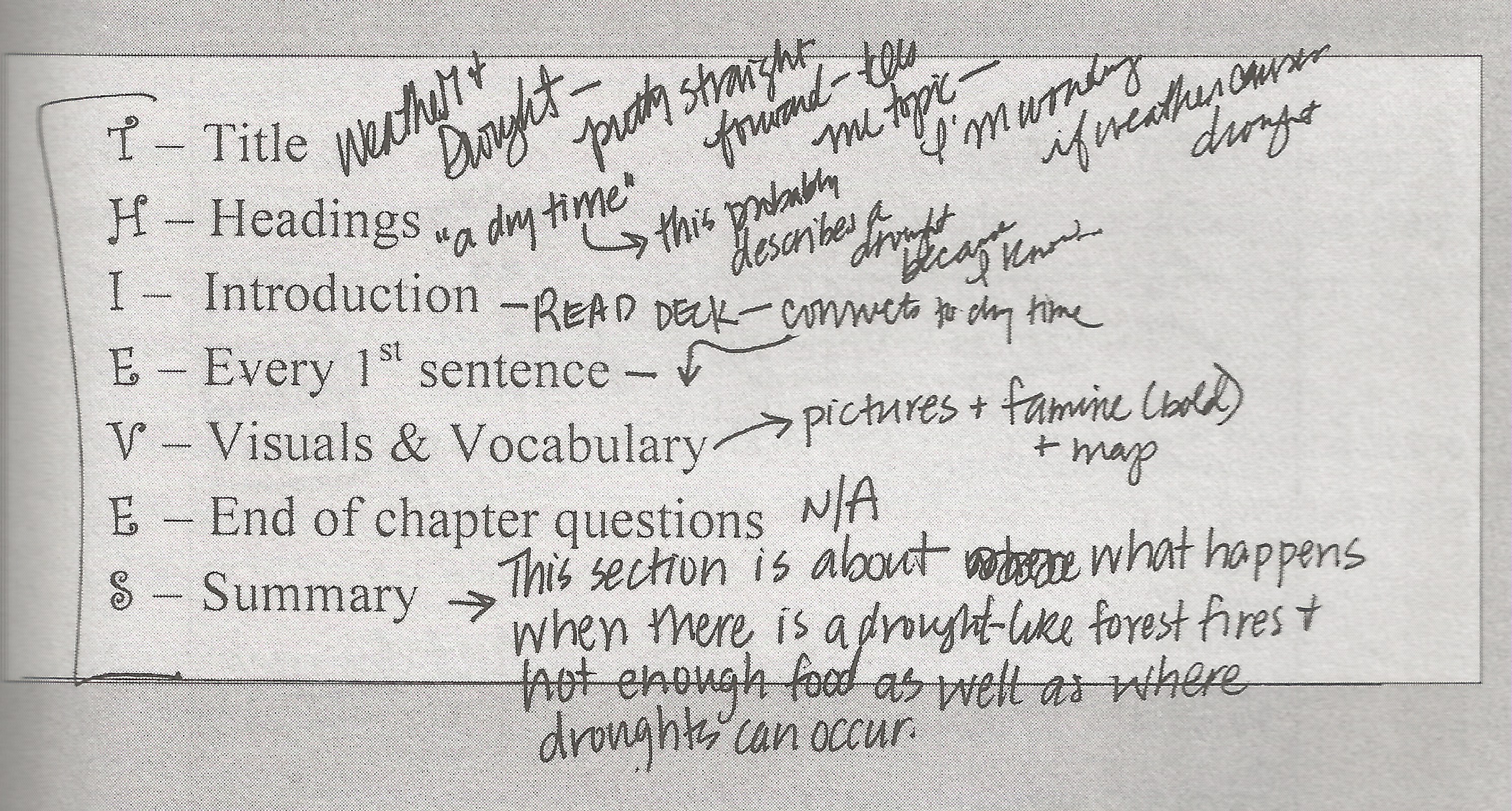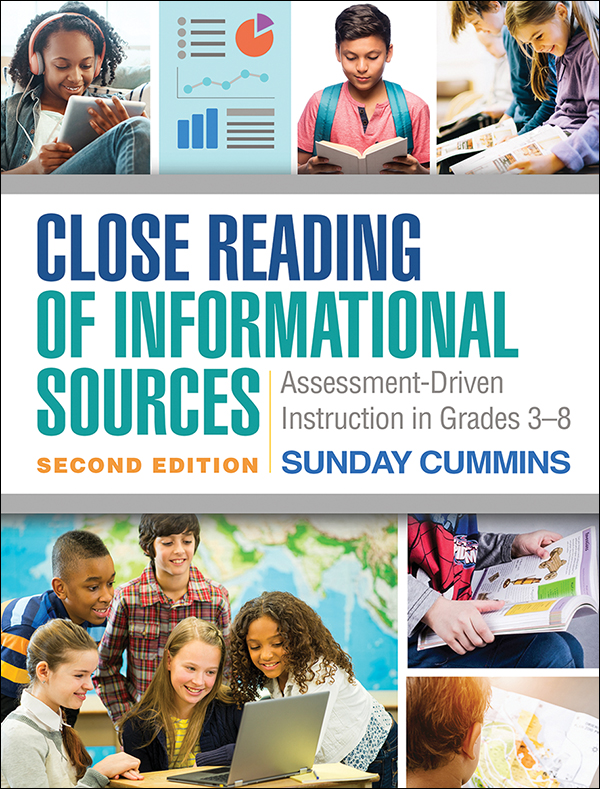Teaching students to use the mnemonic THIEVES (Manz, 2002) to preview a text is an easy way to nurture students’ sense of agency as they tackle feature-dense nonfiction sources. The poster below (created by a colleague!) reveals the details of this strategy–students preview, predict & then summarize their predictions.

A FEW TIPS
- Create THIEVES bookmarks for the students that they can easily use across the day. Below is a bookmark I created on tag board for students. The sticky note is one student’s interpretation of the word “thief.” The language I use is “the reader is getting ahead of the author” vs. “stealing.”

- Set a clear purpose for previewing. You could have them preview to “find out what the article is about” but I’ve found this is too broad for many students. They zoom in on one thing like a photo of an alligator in an article on environmental issues and say, “It’s about alligators.” Consider setting a purpose like – What do you think the author’s main/central message or idea will be? What do you think is the author’s purpose for writing this text?
- Be prepared to model or think aloud in front of students. In advance of teaching lessons with THIEVES, I take notes for a think aloud. Below are my notes for a lesson with a text on droughts.

- With feature dense text, just use THIEVES for a 2-page spread. The students might get overwhelmed by previewing a whole chapter or an article that is several pages. Frequently, there’s enough going on in just the first two pages of a text to give them enough information to make an informed prediction.

An example of a feature-dense text in Scholastic News.
- Teach students to think flexibly as they use THIEVES. Sources are complex. Sometimes there are headings, sometimes there are not. Sometimes looking at the visuals before reading every first sentence is more helpful. Students can get overwhelmed. Sometimes reading the title and headings and intro is enough. Teach students to consider the title, heading, intro, etc. as choices for what they can preview to “get ahead.” I’ve blogged more about this need to be flexible if you want more info.
There are LOTS of resources on the Internet for how to use THIEVES – just Google “THIEVES mnemonic.” In the newest edition of Close Reading of Informational Sources, I describe lessons with THIEVES and provide charts with tips on conferring during THIEVES lessons (p. 77), and assessing students’ use of THIEVES (p. 78-79).

Okay…hope this helps. I’d love to hear your anecdotes about using THIEVES with students!
S
UPDATED 2/26/2021
